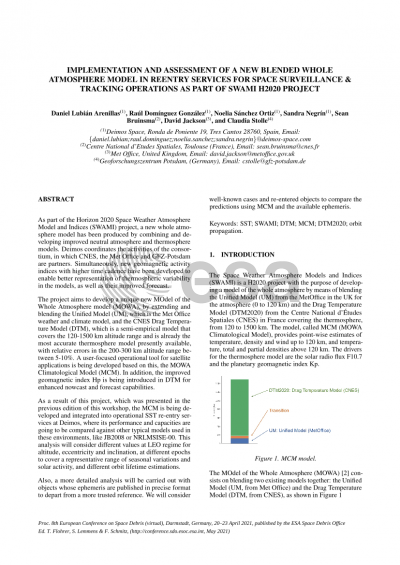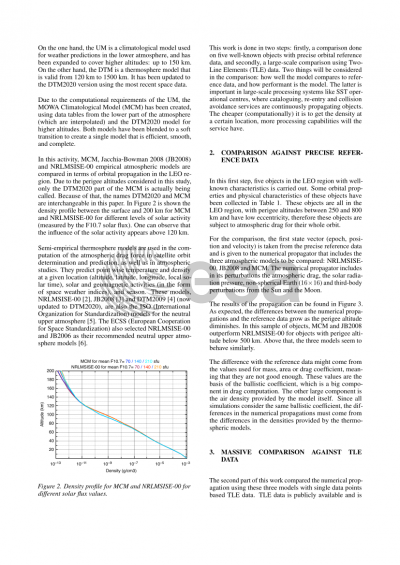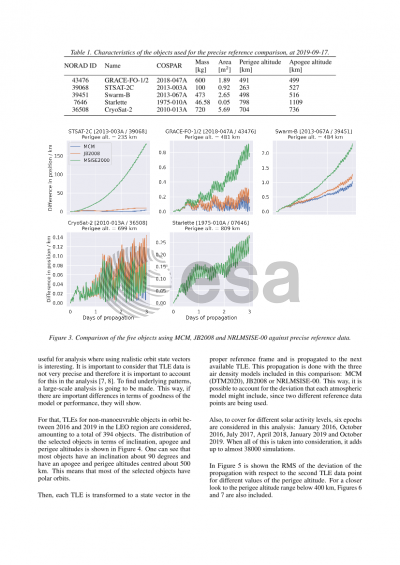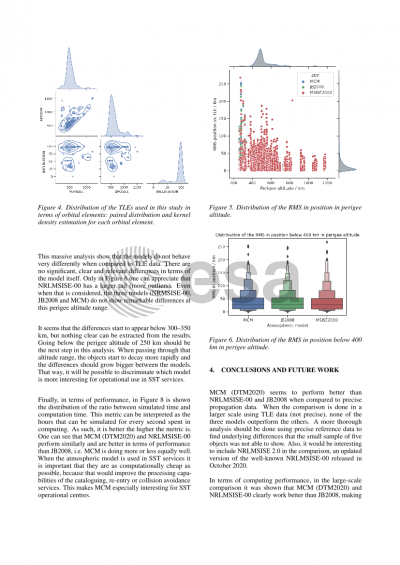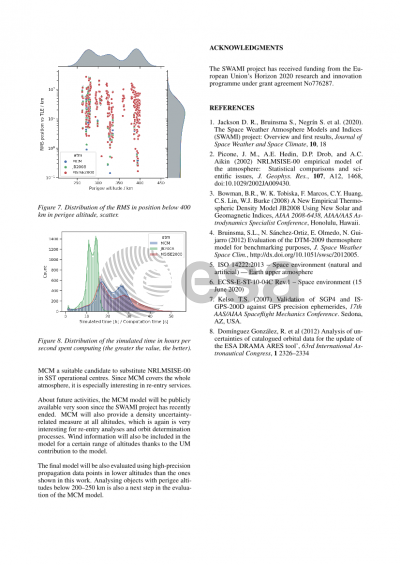Document details

Abstract
As part of the Horizon 2020 Space Weather Atmosphere Model and Indices (SWAMI) project, a new whole atmosphere model has been produced by combining and developing improved neutral atmosphere and thermosphere models. Deimos coordinates the activities of the consortium, in which CNES, the Met Office and GFZ-Potsdam are partners. Simultaneously, new geomagnetic activity indices with higher time cadence have been developed to enable better representation of thermospheric variability in the models, as well as their improved forecast.
The project aims to develop a unique new MOdel of the Whole Atmosphere model (MOWA), by extending and blending the Unified Model (UM), which is the Met Office weather and climate model, and the CNES Drag Temperature Model (DTM), which is a semi-empirical model that covers the 120-1500 km altitude range and is already the most accurate thermosphere model presently available, with relative errors in the 200-300 km altitude range between 5-10%. A user-focused operational tool for satellite applications is being developed based on this, the MOWA Climatological Model (MCM). In addition, the improved geomagnetic index Hp is being introduced in DTM for enhanced nowcast and forecast capabilities.
As a result of this project, which was presented in the previous edition of this workshop, the MCM is being developed and integrated into operational SST re-entry services at Deimos, where its performance and capacities are going to be compared against other typical models used in these environments, like JB2008 or NRLMSISE-00. This analysis will consider different values at LEO regime for altitude, eccentricity and inclination, at different epochs to cover a representative range of seasonal variations and solar activity, and different orbit lifetime estimations.
Also, a more detailed analysis will be carried out with objects whose ephemeris are published in precise format to depart from a more trusted reference. We will consider well-known cases and re-entered objects to compare the predictions using MCM and the available ephemeris.
Preview
